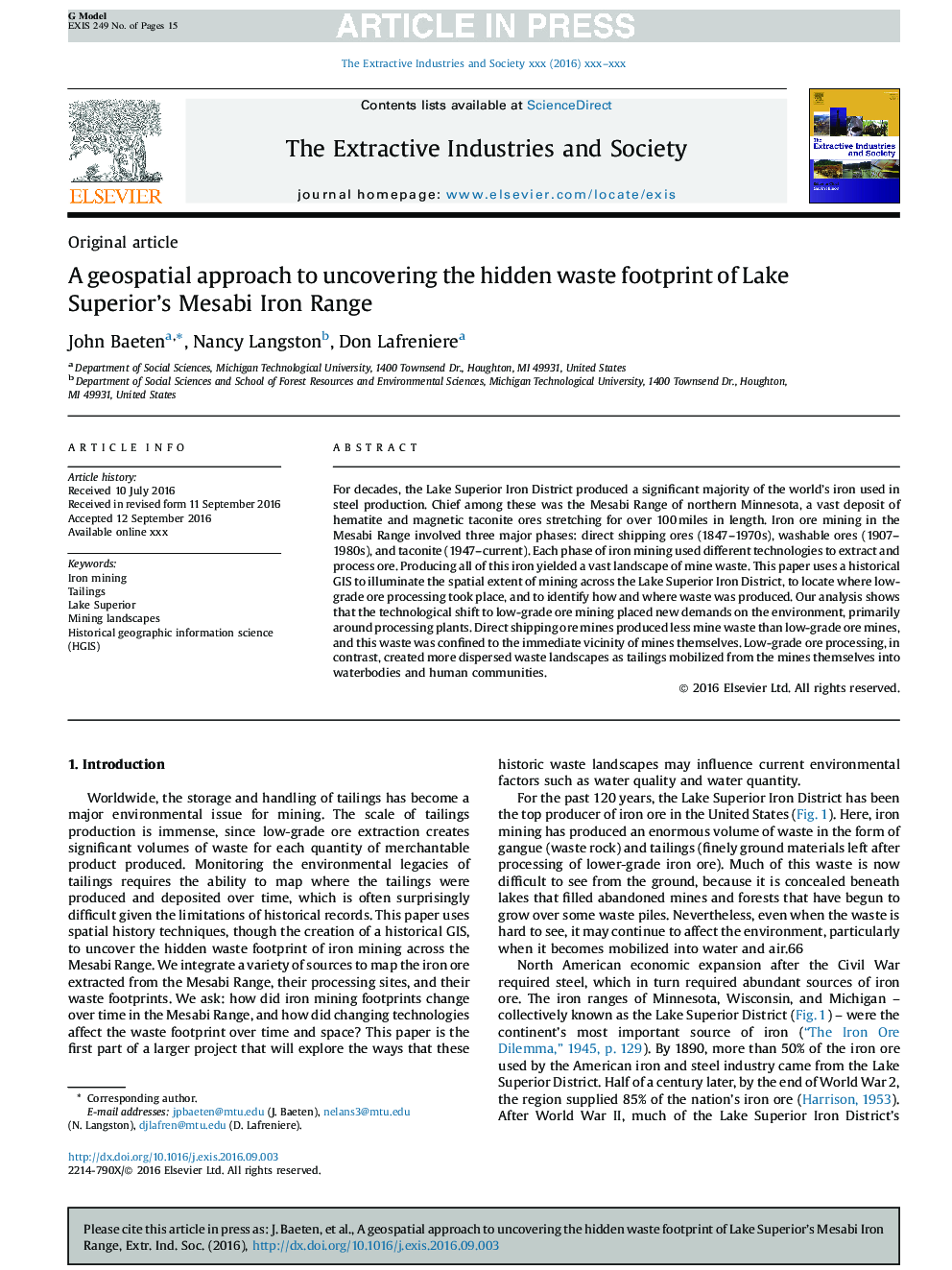| کد مقاله | کد نشریه | سال انتشار | مقاله انگلیسی | نسخه تمام متن |
|---|---|---|---|---|
| 5114431 | 1377991 | 2016 | 15 صفحه PDF | دانلود رایگان |
عنوان انگلیسی مقاله ISI
A geospatial approach to uncovering the hidden waste footprint of Lake Superior's Mesabi Iron Range
دانلود مقاله + سفارش ترجمه
دانلود مقاله ISI انگلیسی
رایگان برای ایرانیان
موضوعات مرتبط
علوم زیستی و بیوفناوری
علوم محیط زیست
مدیریت، نظارت، سیاست و حقوق
پیش نمایش صفحه اول مقاله

چکیده انگلیسی
For decades, the Lake Superior Iron District produced a significant majority of the world's iron used in steel production. Chief among these was the Mesabi Range of northern Minnesota, a vast deposit of hematite and magnetic taconite ores stretching for over 100Â miles in length. Iron ore mining in the Mesabi Range involved three major phases: direct shipping ores (1847-1970s), washable ores (1907-1980s), and taconite (1947-current). Each phase of iron mining used different technologies to extract and process ore. Producing all of this iron yielded a vast landscape of mine waste. This paper uses a historical GIS to illuminate the spatial extent of mining across the Lake Superior Iron District, to locate where low-grade ore processing took place, and to identify how and where waste was produced. Our analysis shows that the technological shift to low-grade ore mining placed new demands on the environment, primarily around processing plants. Direct shipping ore mines produced less mine waste than low-grade ore mines, and this waste was confined to the immediate vicinity of mines themselves. Low-grade ore processing, in contrast, created more dispersed waste landscapes as tailings mobilized from the mines themselves into waterbodies and human communities.
ناشر
Database: Elsevier - ScienceDirect (ساینس دایرکت)
Journal: The Extractive Industries and Society - Volume 3, Issue 4, November 2016, Pages 1031-1045
Journal: The Extractive Industries and Society - Volume 3, Issue 4, November 2016, Pages 1031-1045
نویسندگان
John Baeten, Nancy Langston, Don Lafreniere,